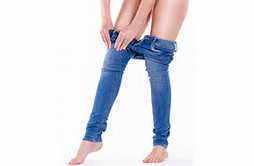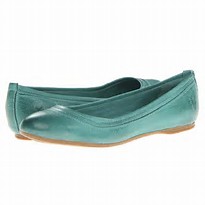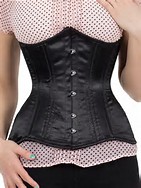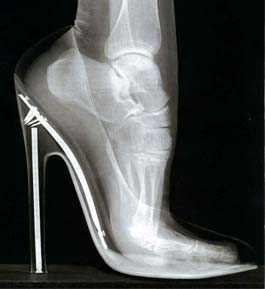Many people will go to great extents for fashion. We dye our hair to look younger, wear make up to look more attractive, spend our hard earned paycheck for clothes to keep up with trends, and diets to become thin.
But what price do we really pay to be fashionably trendy?
High heels
Although most women like the look of high heels, it’s fair to say that many are unaware of the health risks. Most health problems associated with wearing high heels involve foot bones and skeletal misalignment. From 2002-2012 high-heel–related injuries have nearly doubled. Most injuries occur as sprains and strains to the foot and ankle. Researchers from the University of Alabama at Birmingham state that U.S. emergency rooms treated 123,355 high-heel-related injuries during this time period.
There is also some research that suggests that wearing heels can impair the muscular pumping in the calves that helps the return of blood to the upper body. This study monitoring women walking barefoot and in shoes with varying heel heights found that the amount of blood pumped while wearing high heels was reduced. To avoid back aches and other problems consider switching to a low heel.
Handbags
Carrying a heavy purse can cause pain, back problems and poor posture. Many women may be surprised that they are carrying 8-10 pounds in their oversized purses. The problem is multifaceted: putting weight on one shoulder can create pressure on nerves that create an aching sensation and even cause shooting pain from your neck, down to your arm. You also need to counterbalance weight on one side of your body, as well as scrunching up your shoulder to keep the purse strap from falling. To avoid shoulder back or neck pain, consider switching to smaller bag.

Skinny jeans
While it may be in fashion to wear skinny jeans, there are a couple of issues that are concerning. A common complaint is numbness running down your leg known as meralgia paresthetica. In addition, wearing pants that are too tight can put pressure on the abdomen resulting in abdominal discomfort and heartburn. If you like the look of tighter pants consider wearing leggings which are body conforming, without cutting off circulation.

Ballet flats
While many women love the versatility of a pair of flats, they have super thin soles without cushioning arch support, or shock absorption. Lack of arch support in shoes can lead to problems such as plantar fasciitis. Thin soles on shoes can also lead to other issues such as inflammation, back pain, stress fractures or tendonitis. Consider low heel shoes with arch support.
Flip flops
Flip flops are not meant for daily walking, and daily use of flip-flops may cause you to experience shin splints, joint pain and other problems. Like ballet flats, the thin soles and lack of support can lead to back pain, tendonitis and plantar fasciitis. Look for sandals that offer arch support and a back strap to keep sandals from falling off.

Compression garments
While wearing girdles may no longer be the trend, wearing spanx is. Many men and women wear these to create a more slender appearance. The problem with spanx is that like skinny jeans or other tight clothing, you can end up with abdominal problems, heartburn and leg numbness. To avoid these problems, pass on compression garments.
Thong underwear
While many men and women may enjoy wearing a thong due to invisible panty lines, they may be best saved for occasional use. Synthetic materials encourage yeast organisms to multiply. Rough materials can also cause chafing and infections to delicate skin. To help prevent any health issues, consider swapping out synthetic underwear for organic cotton briefs for daily wear.
Yoga pants
While yoga pants are extremely comfortable, you may not be aware that some brands actually have metal fibers. The metal fiber mesh is what helps to keep the body dry during a workout. What’s the problem? Wearing these pants during an MRI can cause the metal to heat up and feel like a 2nd degree burn. Save these pants for yoga and exercise class only.

Crocs
Due to its lack of support, and the fact that they can slip off easily, they really aren’t meant for daily use, especially for children. There have been numerous lawsuits of children being injured while wearing crocs. Consider lace up sneakers with arch support for children.

Corsets
A few famous people, who will remain nameless, have made waist training a popular trend. Corsets however can provide both short and long term complications, such as lung compression, fractured ribs (If corset is used incorrectly) and crushed organs. “Medically, it doesn’t make sense that cinching your waist tightly will make it permanently smaller,” says Mary Jane Minkin, M.D., clinical professor of ob-gyn at Yale School of Medicine. “Once you take the garment off, your body will return to its usual shape. It’s also uncomfortable, restricts your movements, and if you wear it really tight, it can even make it difficult to breathe and theoretically could cause rib damage.” Consider an exercise program appropriate for your age and health status.
Skin lightening creams
Doctors have stated that skin lightening creams and injections carry dangerous health risks due to their harsh ingredients. The FDA has ordered that more studies be conducted into hydroquinone since the experiments carried out showed that mice who were fed this ingredient resulted in them developing cancer. To avoid the risk, pass on skin lightening products.
Synthetic Fabrics
Synthetic fabrics used in clothing, are treated with chemicals and dyes during and after processing. These chemicals can have a negative impact on your health. The base for most synthetic fabrics is a liquid made from coal, oil, or natural gas. To make these clothes more durable Perfluorochemicals (PFCs) including Teflon are added to fabric to offer wrinkle and stain resistant qualities. Individuals with sensitive skin may suffer from allergic reactions such as nausea, headaches, rashes, hives and burning skin. To avoid this risk look for organic or natural fiber clothing.

Dry cleaned clothes
Dry cleaned clothes are not washed, but actually cleaned with solvents. Perchloroethylene, or PERC is used in dry cleaning facilities nationwide. Judith Schreiber, Ph.D., the chief scientist of environmental protection for the New York Attorney General’s Office, says she “would classify PERC as a neurotoxin.” In 1996 Consumer Reports tested exposure to freshly dry-cleaned clothes and found enough perc in them to significantly increase the cancer risk of consumers who wear a lot of dry-cleaned clothes. Avoid the risk and don’t purchase clothes that need to be dry cleaned.
No matter the trends, nothing is worth the price of your health. Purchase wisely.








